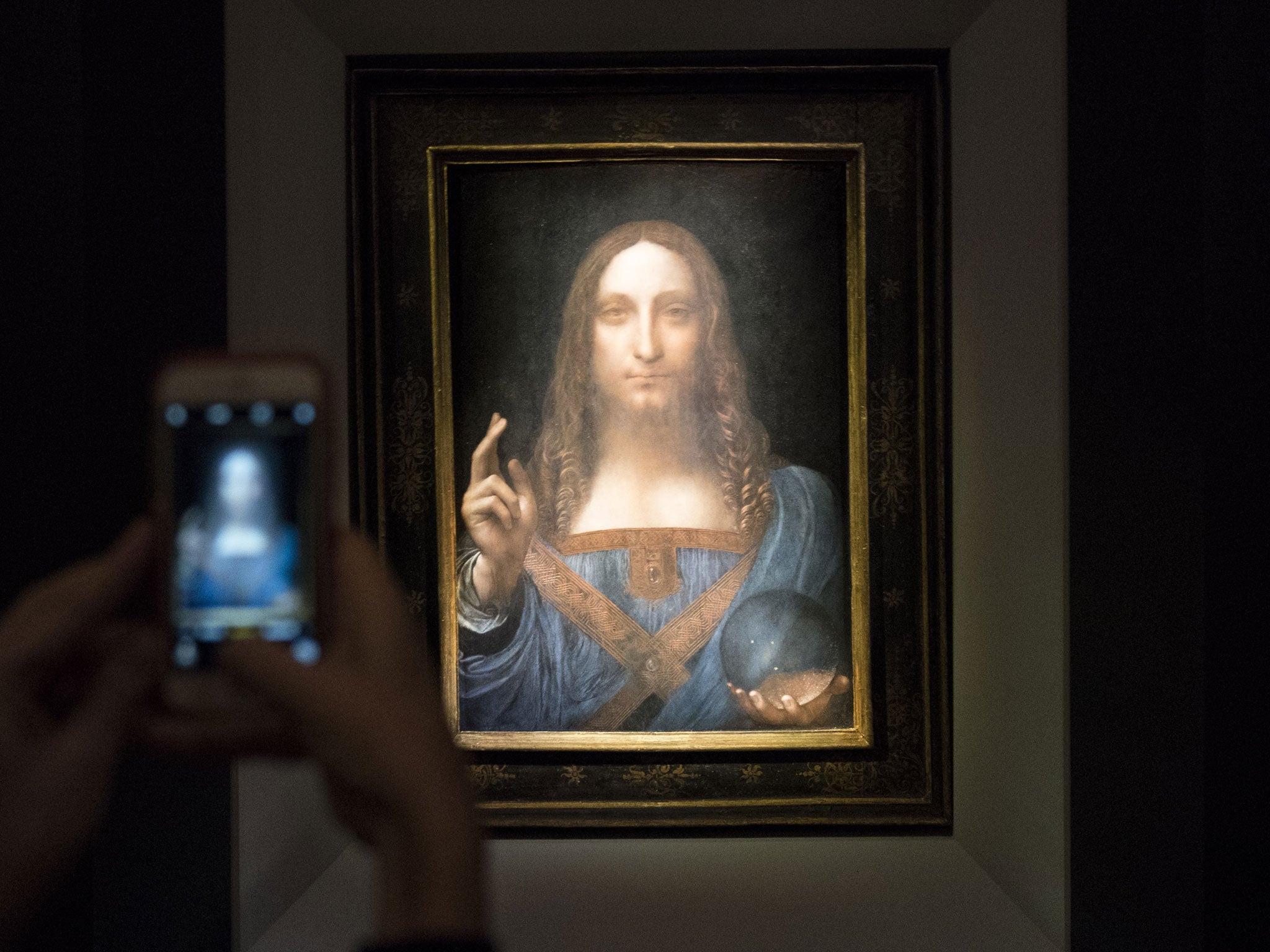Abu Dhabi Louvre has delayed the unveiling of a Leonardo masterpiece – but is it by the grand master at all?
There are a great many things wrong with 'Salvator Mundi' – all of which should call into question its origins


Your support helps us to tell the story
From reproductive rights to climate change to Big Tech, The Independent is on the ground when the story is developing. Whether it's investigating the financials of Elon Musk's pro-Trump PAC or producing our latest documentary, 'The A Word', which shines a light on the American women fighting for reproductive rights, we know how important it is to parse out the facts from the messaging.
At such a critical moment in US history, we need reporters on the ground. Your donation allows us to keep sending journalists to speak to both sides of the story.
The Independent is trusted by Americans across the entire political spectrum. And unlike many other quality news outlets, we choose not to lock Americans out of our reporting and analysis with paywalls. We believe quality journalism should be available to everyone, paid for by those who can afford it.
Your support makes all the difference.The unveiling of the supposed Leonardo masterpiece, Salvator Mundi, at the Louvre Abu Dhabi has been postponed indefinitely. Making the announcement via Twitter, the museum gave no reasons for the delay nor any indication about when the painting might be hung on its beautiful walls. Some have suggested that the postponement might be to ensure that the unveiling coincides with the 500th anniversary of Leonardo da Vinci’s death next year in 2019 – or perhaps with the first anniversary of the Louvre Abu Dhabi’s opening, on 11 November.
But might there be another possibility? Maybe the directors and the money men behind the museum, constructed at enormous expense and amid great controversy on Saadiyat Island in the Persian Gulf, are having second thoughts about the authenticity of their acquisition. No one in the history of the world has ever spent as much money on a work of art as Badr bin Abdullah bin Mohammed bin Farhan al Saud – a Saudi prince and the country's culture minister who was himself almost certainly acting as a middle man for the museum – did last year. To the best of everyone’s knowledge, he’d never bought any art before and then went and splurged nearly half a billion dollars on this painted pudding.
Scholarship, it would appear, is shifting away from the attribution. The panel has always had its sceptics, even after its restoration. Indeed, that restoration itself is coming under scrutiny, with revelations that ‘re-touching’ carried on after its authentication as part of the National Gallery show, Leonardo da Vinci: Painter at the Court of Milan, in 2011-12 and before it was sold in 2017. Why? If it was already a Leonardo, why did it need to look more like a Leonardo? The promised technical reports by the group of scholars who authenticated the painting and were responsible for its restoration have remained just that: promised.
In my view, there are a great many things wrong with Salvator Mundi – all of which should call into question its origins. It is damaged, it’s true, and was badly overpainted in the past; although restoration removed a lot of this, it has, as I’ve said, also been extensively repainted in recent years. Still, the drawing is lumpen: one hand is inexplicably larger than the other, the pose is full-on, flat, a painterly furlong from the style adopted by Leonardo in works from around 1500, it’s supposed date; the face looks sly and smug and not at all Saviour-like (compare it with the haunting Christ in the Last Supper); and the relationship between the hand clutching the crystal orb and the rest of the body is ill-defined to say the least.
Now, everyone says how masterful that orb is, but, as various experts have suggested, anyone with the tiniest powers of observation will know that what can be seen through a solid object of crystal or glass will look distorted, enlarged or reduced. Yet whoever painted this rendered the sleeve and mantle as if there were nothing at all between them and the eye.
For Leonardo, whose greatness is beyond doubt, observation and truth were fundamental. His eye was the most eagle-like of any artist, and he spent years and years observing natural phenomena, including crystal, so that he could reproduce their effects in minute detail. Other gazed-through objects – some of the glasses littering the table in the Last Supper, the vase in the Madonna of the Carnation in Munich – show definite distortion of what can be seen behind them. Even an old 17th century engraving of the Salvator Mundi prototype by Bohemian artist Wenceslaus Hollar indicates some distortion of the clothing seen through the crystal orb.
What we have here must be a workshop effort, parts of which may – and I stress may – have been retouched by the master himself. But by no stretch of the imagination is this otherwise unsightly mess an authentic, complete work by Leonardo da Vinci. I know some others disagree. I have no doubts.
But to what extent has debate about this painting been coloured by the way in which it was acquired, at a hyped-up auction (Christie’s referred to the piece emotionally as the “last da Vinci”) through surrogates who may or may not have been representing the Crown Prince of Saudi Arabia or other unknowns, for a museum that masquerades as the Louvre (the original in Paris being one of the greatest depositories of works by Leonardo in the world; the copy in Abu Dhabi a result of a deal which rewarded the French state with an eye-watering amount of money)? The buyers, the museum and the authorities in the region cannot afford for too many doubts to be raised.
The whole process to me highlights the perils of authentication, particularly when its purpose is big money rather than simple appreciation. Can any old daub be a Leonardo if someone is willing to pay for it as if it were? If so, I may have a few in my attic should anyone be interested.
Frankly, this whole episode has been smoke and mirrors all the way: the painting sold at auction in 2017 is substantially not the painting shown at the National Gallery in 2011. Nothing is what it seems to be, not even the unveiling of the Abu Dhabi Louvre’s most expensive acquisition. Because ultimately it isn’t there until it is there; just as it isn’t by Leonardo until it is.
Join our commenting forum
Join thought-provoking conversations, follow other Independent readers and see their replies
Comments